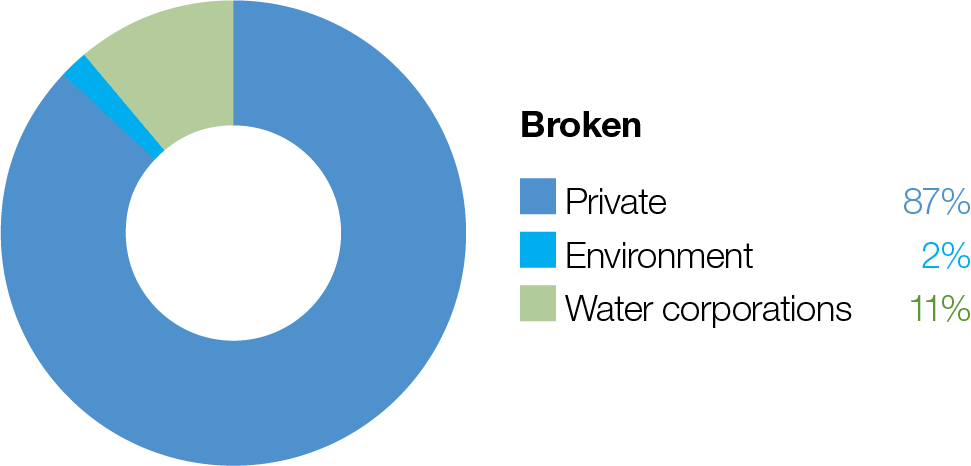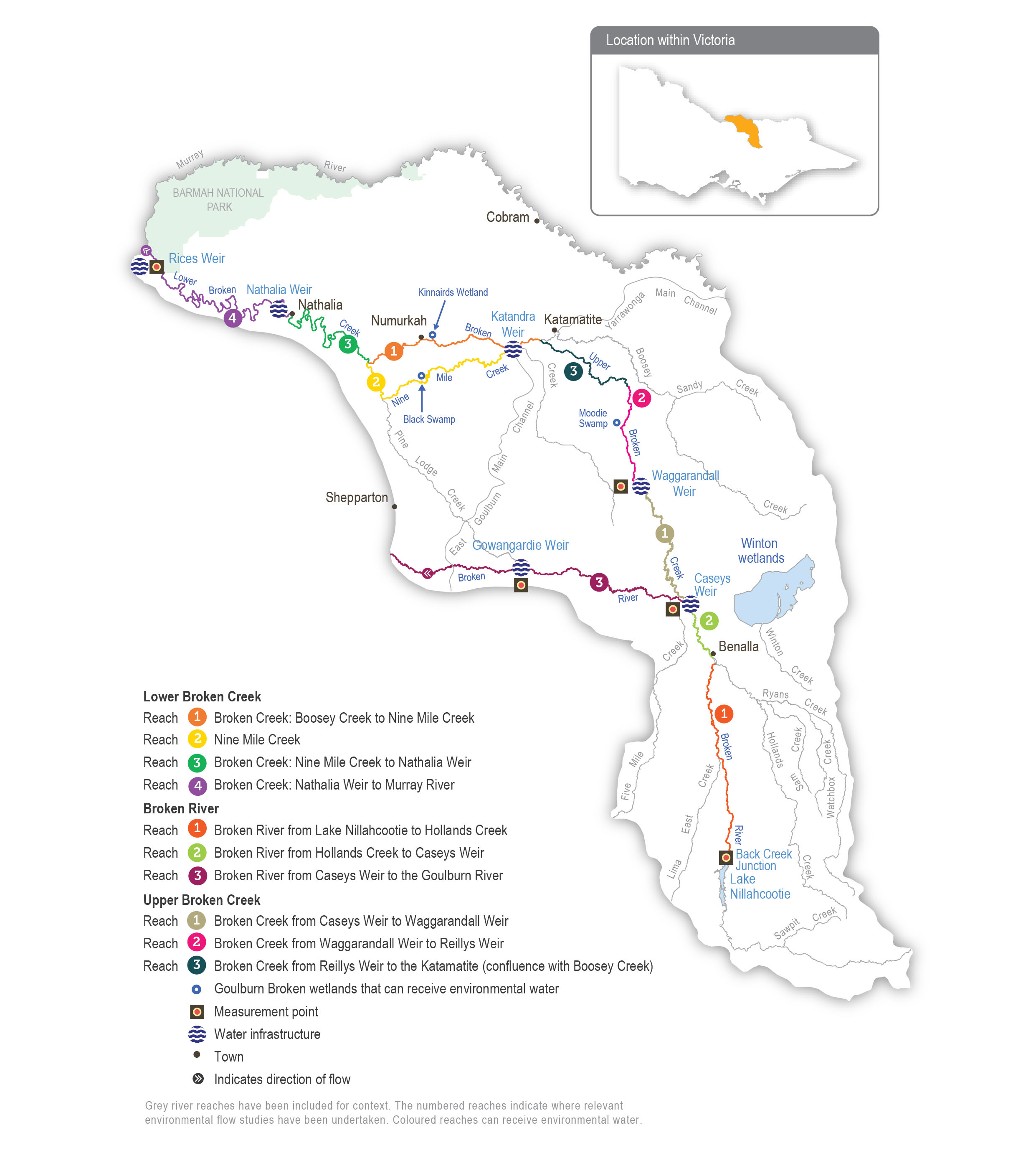These wetlands are on the Country of the Yorta Yorta People, whose knowledge and practice are evident throughout the landscape; for example, Black Swamp has evidence of old cooking mounds around its perimeter. Kinnairds Wetland and Black Swamp are red gum swamps near Numurkah. Moodie Swamp is a cane grass wetland adjacent to upper Broken Creek at Waggarandall that provides excellent breeding habitat for brolga.
The water regimes of these wetlands are influenced by their position in the landscape. The development and operation of the Shepparton and Murray Valley irrigation districts have changed the natural flow paths and the timing, frequency, volume and duration of natural flooding to these and other wetlands in the region. The existing irrigation system infrastructure enables water for the environment to be delivered to the three nominated wetlands, but under existing agreements, irrigation deliveries have priority within the channel system. This limits the volume of water that can be delivered to the wetlands. The VEWH, waterway managers and storage managers adjust the timing and rate of environmental deliveries where possible to optimise environmental outcomes within the current system constraints.

Proportion of water entitlements in the Broken system held by private users, water corporations and environmental water holders on 30 June 2020




